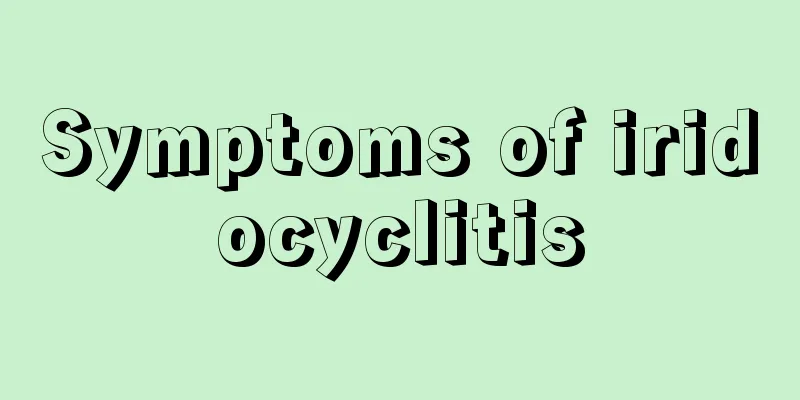Symptoms of iridocyclitis

|
When iridocyclitis occurs, you need to pay attention to the symptoms and take timely treatment measures. Common symptoms are pain, photophobia, tearing and decreased vision. Some people may also show obvious ciliary congestion symptoms. 1. Symptoms 1. Pain, photophobia, tearing and decreased vision are the main characteristics of this disease. 2. The trigeminal nerve of the iris and ciliary body is not slightly stimulated by toxicity. The contraction of the ciliary muscle and the compression of the swollen tissue produce pain that can be reflected to the brow arch and cheek. There is obvious tenderness in the ciliary body, and the pain worsens at night. In the acute phase, it is often accompanied by corneal inflammation and photophobia. Vision may suddenly decrease due to tears. This is because corneal edema, posterior corneal deposits and inflammatory exudates affect the entry of light. The ciliary body is stimulated by inflammation and undergoes reflex spasm, causing pseudomyopia. In the late stage, it may be combined with macular edema and optic neuroretinitis. 2. Physical signs (1) Ciliary congestion: There is obvious ciliary congestion, and in severe cases, mixed congestion and conjunctival edema may also occur. (2) Posterior corneal deposits: Due to the temperature difference between the back of the cornea and the surface of the iris, the inflammatory cells and pigments adhere to the rough corneal endothelium after inflammation under the influence of centrifugal force and gravity caused by aqueous humor convection in the anterior chamber. This is called posterior corneal deposits. The deposits are mostly deposited in the lower center of the cornea in a triangular shape, with the tip facing the pupil area, with large particles at the bottom and small particles at the top. The manifestations vary according to the nature of inflammation, the severity of exudate, the length of time, the size, shape, and quantity. Large grayish-white mutton-fat-like KP is a characteristic of chronic inflammation; small gray dust-like KP is more common in acute or allergic granulomatous diseases. White KP may also be seen in some normal people without the manifestation of iritis. It is physiological KP, so it should be differentiated and diagnosed in combination with other clinical signs. (3) Turbid aqueous humor: Due to inflammation, the protein content in the aqueous humor increases, and the aqueous humor becomes turbid. Under the slit lamp, a light-colored reflective band appears in the aqueous humor, which is called Tyndall's sign and indicates active inflammation. In severe cases, fibrinous and purulent exudates may be present, which are deposited in the lower part of the anterior chamber due to gravity, showing a liquid surface, which is hypopyon. If a blood vessel ruptures and red blood cells overflow, hyphema will occur. |
<<: What should I do if I have cracks at the corners of my mouth?
>>: Does colitis require surgery?
Recommend
What are the symptoms of uterine cancer
Uterine cancer is one of the most common malignan...
Kidney deficiency usually causes white hair
In our impression, only old people have white hai...
Will eating honey cause premature maturity?
To know whether eating honey will cause premature...
Early education for one and a half year old babies
Early education is crucial for children in their ...
What are the symptoms of intestinal polyps
People have to deal with diseases in their daily ...
How to wash clothes stained with liquid foundation
Many people accidentally get foundation on their ...
Helicobacter pylori positive in the stomach
Many patients with stomach diseases, when long-te...
Can I play computer after dinner?
Many people like to play computer games or mobile...
How to develop left brain memory
We all know that the left brain and the right bra...
People with panda eyes should be careful of kidney stones
1. Extensive hair loss Regardless of the change o...
What tests are done for bladder cancer
Bladder cancer is a common malignant tumor of the...
What are the dangers of drinking carbonated drinks
Carbonated drinks are what we often call soda in ...
How to effectively treat macular degeneration
How to effectively treat macular degeneration? In...
How to diagnose liver cancer and detect it as early as possible? There are 6 common diagnostic methods for liver cancer
In recent years, the mortality rate of liver canc...
Rheumatoid arthritis is often accompanied by these signs
In recent years, among many orthopedic diseases, ...









